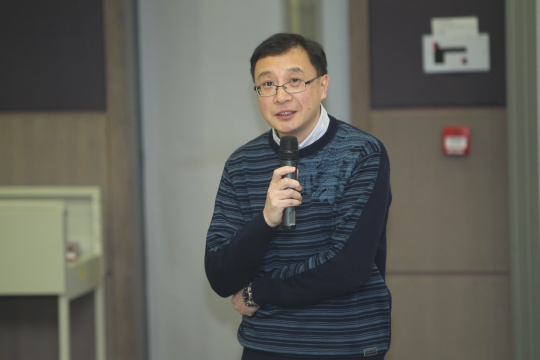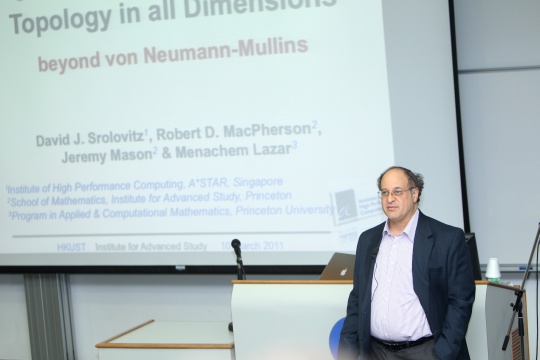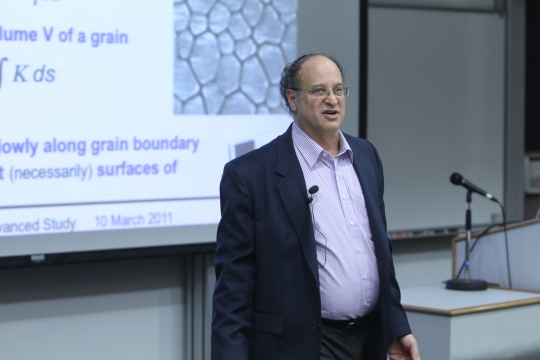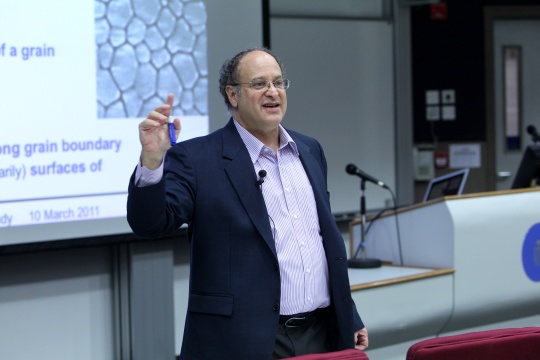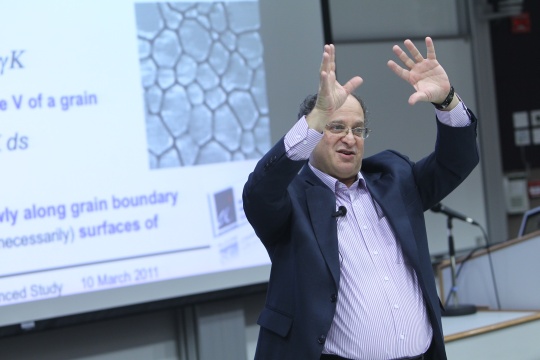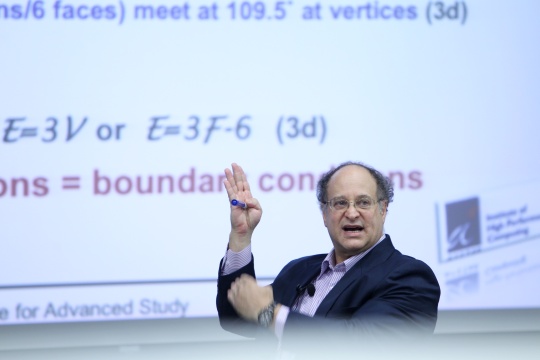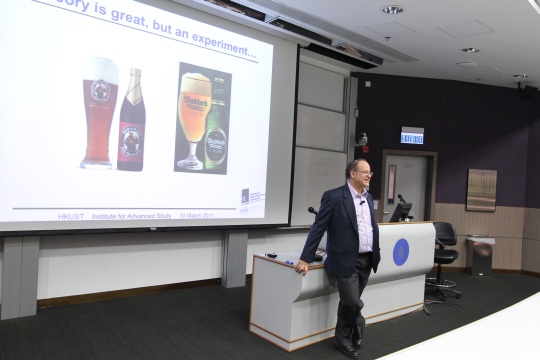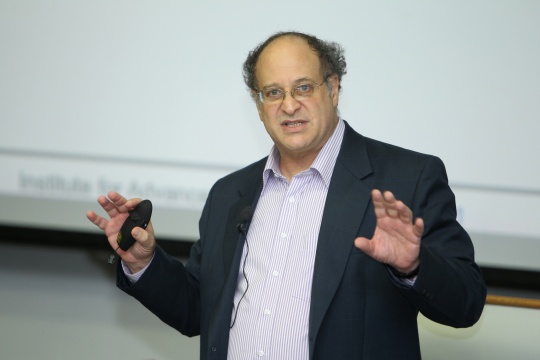Grain Growth, Shape, and Topology in all Dimensions: beyond von Neumann
Abstract
Metals and ceramics commonly consist of space-filling arrays of single crystal grains separated by a network of grain boundaries. Foams (froths) are networks of gas-filled bubbles separated by liquid walls. Cellular structures also occur in biological tissue, magnetic, ferroelectric, and complex fluid contexts. In many situations, the cell/grain/bubble walls move under the influence of their surface tension (capillarity), with a velocity proportional to the wall's mean curvature. As a result, the cells evolve and the structure coarsens.
Using this relation between velocity and mean curvature, the fact that three domain walls meet at 120 degrees and basic topology, von Neumann gave an exact formula for the growth rate of a cell in a 2-d cellular structure. This is the basis of modern grain growth and foam coarsening theory. The speaker will present an exact, and much sought, extension of this fifty-year old result into three (and higher) dimensions. The speaker will also show recent results that use the ideas behind this theory for efficient, accurate simulations of grain growth microstructures and bubble dynamics and new approaches to characterizing microstructure topology.
About the Speaker
Prof. David Srolovitz is an eminent computational materials scientist who is holding the leadership position as Executive Director of Institute of High Performance Computing (IHPC), Singapore. He was formerly Dean of Yeshiva College, US, Chair of Department of Mechanical and Aerospace Engineering, Princeton University and President of the Society for Engineering Science. He is a Fellow of the Materials Research Society, ASM International, and the Institute of Physics (UK). His current research interests include microstructural evolution, film growth, and mechanical deformation and defects in crystals. He is the author of over 400 scholarly articles published widely in materials science, physics, and mechanics literatures including Nature, PNAS, Acta Materialia, Physical Review Letters, etc. He is holder of several patents and recipient of honors from dozens of professional organizations. Prof Srolovitz received his MSc and PhD degrees, both in materials science, from University of Pennsylvania.


